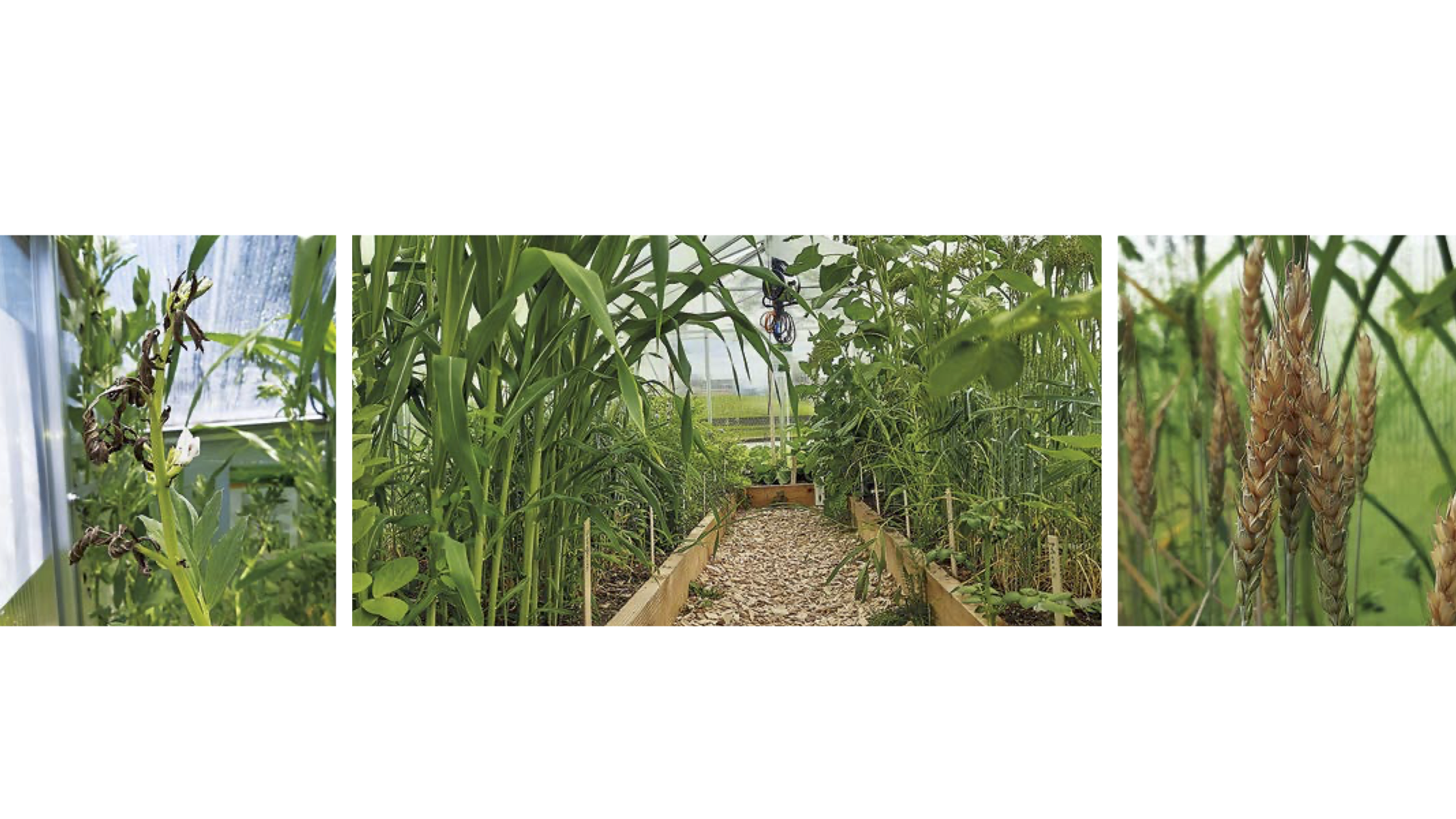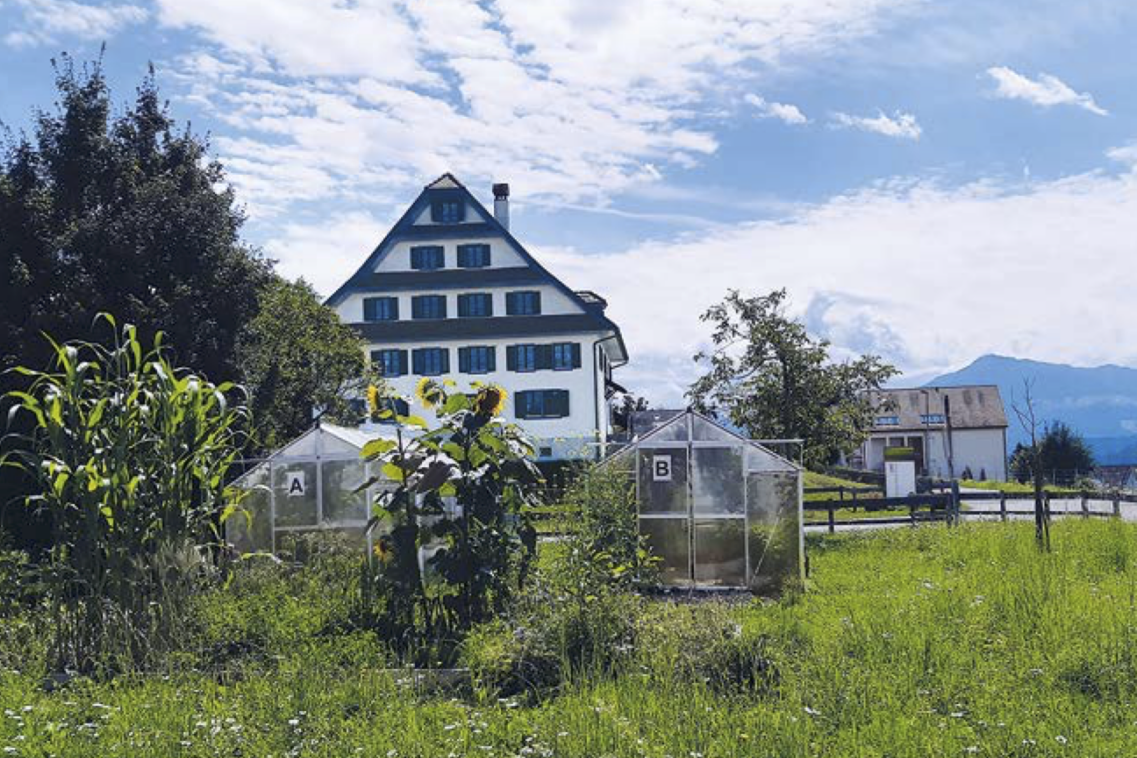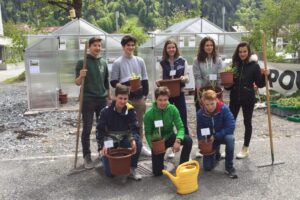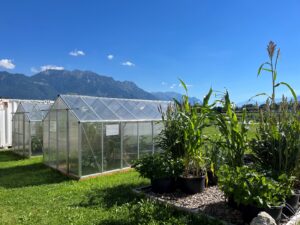Raphael Vogel and Janna Ottiger
In mid-April 2021 the time had come: the climate garden at Schluechthof was set up and the plants were sown. During the summer months, the traveling exhibition “Climate Garden 2085” was on display, inviting visitors to find out more about possible future climate scenarios and the effects of climate change on crops.
Background
Climate change is considered one of the most explosive issues of our time. Our climate garden consisted of two greenhouses and an outdoor bed. The same plants were grown in all three locations. So the plants outside had today’s climate conditions, while the first greenhouse simulated global warming in 2085 with a 50% reduction in greenhouse emissions.
The second greenhouse simulated progressive global warming without climate policy measures. At the Schluechthof, the greenhouses were warmed by 3 and 6.5 degrees Celsius compared to the average daily temperature in summer. To do this, we installed sensors that measured the temperature in the respective greenhouse during the day and were simultaneously connected to the heating system in order to heat the climate garden more or less depending on the outside temperature. In order to cope with the drought inherent in climate change, half of the plants in the climate garden were watered 30 percent less. The values for this were calculated by researchers at ETH Zurich and MeteoSchweiz. The traveling exhibition is coordinated by the Zurich-Basel Plant Science Center, a competence center for plant sciences at ETH Zurich, the University of Zurich and the University of Basel.
The implementation at the LBBZ Schluechthof
19 different crops were grown in our climate garden. The forage plants included field beans, white peas, corn, sorghum, triticale, alfalfa, white clover, Italian ryegrass and artificial meadow. Potatoes, rapeseed, wheat, grain millet, snake cucumber, sunflower, rice and lupine represented crops for direct human nutrition. UFA Delta and UFA Lepha were grown as green manure. This attracted numerous Schluechthof and playground visitors to the climate garden. School classes and clubs also visited us and conducted workshops to find out the photosynthesis abilities of the plants that were struggling with heat and drought.
Results
Although various difficulties arose during the summer, such as keeping the temperature constant, reducing the humidity in the greenhouses or extreme influences such as hail and rain, we can look back on an exciting and instructive project. As expected, C4 crops such as corn, sorghum and grain sorghum were able to adapt better to the heat. Plants with a strong root system, such as alfalfa, were also able to withstand water and heat stress better and achieved good yields even under difficult conditions. The “classic” arable crops of our latitudes, such as field beans, protein peas and wheat, survived the warm and dry conditions, but produced fewer and smaller fruits compared to today’s climate. Shallow-rooted plants such as grasses and clover showed very large losses, especially when irrigation was reduced, as we also experienced in the dry and hot summer of 2018.
In order to provide curious people at home with information about the climate garden, we created a blog on the LBBZ Schluechthof homepage and kept interested parties up to date through social media. This means you can still experience the project and its results, even if the climate garden was dismantled in September.
www.klimagarten.schluechthof.ch

Translated from German





